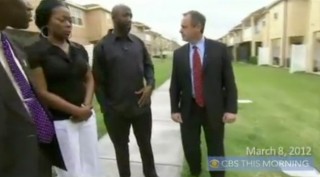Lesson Outline
August 28, 2012
![]() Download the PDF of this lesson plan
Download the PDF of this lesson plan
 The shooting death of Trayvon Martin in February of 2012 was a major news story not only in Florida, but around the United States. In this lesson, students will be introduced to the News Literacy concept of identifying Information Neighborhoods, in order to understand and place in context the type of information being given in each example from the media reports of the shooting.
The shooting death of Trayvon Martin in February of 2012 was a major news story not only in Florida, but around the United States. In this lesson, students will be introduced to the News Literacy concept of identifying Information Neighborhoods, in order to understand and place in context the type of information being given in each example from the media reports of the shooting.
There are further connections to these media clips that follow below.
Media Clips
News Literacy Connections
News Literacy Lesson #4: Know Your Neighborhood - There are different types of information, of which news is one that is subject to the journalistic process of Verification, and for which an independent individual or organization is directly accountable.
Lesson Guiding Questions:
- What are the characteristics of each of these pieces of media? Are they news? What make them or do not make them news?
- What value do news commentators give to a piece of news?
- What information are you given in the first piece? The follow up piece? What kinds of conclusions can you make at the end of each of the pieces?
Further News Literacy Connections
Lesson 6: News or Opinon: License to Kill? - There is value in opinon journalism. When it works, it gives insight, challenges assumptions, and helps you make a decision or a judgement.
Lesson 8: Truth, and Verification - The truth is provisional -- and may change based on evidence presented at the time of the report.
Lesson 9: Evaluating Sources - News consumers sometimes have to critically evaluate sources to examine their validity.
-
0 comments
-
2 saves
-
Share




